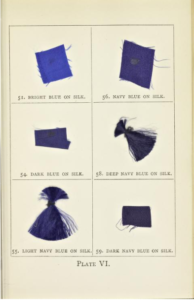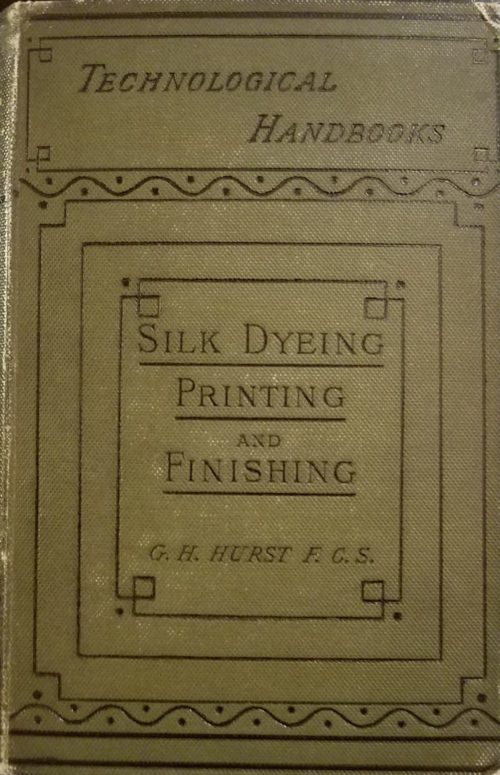The museum as “practical working laboratory” that sisters Sarah and Eleanor Hewitt envisioned for the study of the decorative arts, could not have been realized without the extensive collection of books and supporting materials found in the library at the Cooper Union for the Advancement of Science and Art. Numerous books about process, such as the Technological Handbooks series, filled research and practicum institutions to support students’ creativity and technical training.
Silk dyeing, printing, and finishing, by George H. Hurst is number nine on the Technological Handbooks list. George Hurst was asked by the publishers of The Dyer, Calico Printer, bleacher, finisher & textile review to submit articles about silk and silk making. Several of these articles were later re-written, and with added articles, published in 1892 in this book which focuses on the history, craft and process of silk making. It describes the difference between ordinary silk from the Bombyx Mori silkworm, which eats from the mulberry tree. All other types of silk are considered “wild silks” such as that from the Tussah and Muga silkworms. The harvesting, boiling and bleaching of the silk is discussed as well as the types of dying, machinery and silk printing. Lastly, the book ends with 21 plates of mounted colored samples of dyed silk. Most interesting are the 170 recipes for dying and printing silk, with 66 patterns.

Shades of blue silk on Plate VI
The Smithsonian Libraries houses many Technological Handbooks throughout its 21 specialized branches, such as Dyeing and tissue-printing, by William Crookes, Cotton spinning: its development, principles and practice, by Richard Marsden, and Woollen and worsted cloth manufacture: being a practical treatise…, by Roberts Beaumont.
Nilda Lopez is the Library Technician at Cooper Hewitt, Smithsonian Design Library.
